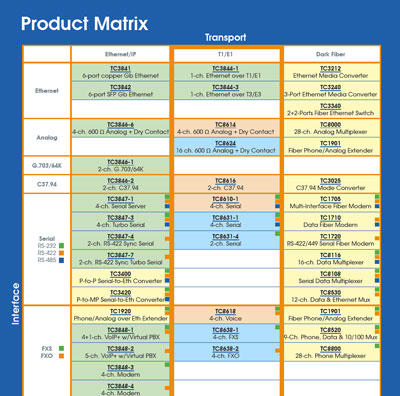By Jessica Liang, Director of Marketing and Steve Cragg, VP of Sales and Marketing
Critical networks have leaned on leased lines for years since the connection does not carry third party communications, assuring a specified level of quality. These lines, private telecommunications circuits between 2+ locations provided per a commercial contract, have served as the backbone transport to critical infrastructure including utility, rail and public safety networks. However, many Carriers have begun to phase out leased services for IP-based solutions, and networks are challenged with replacing existing devices due to cost, complexity, timing and more. Recently, the increase in termination notices and fees have accelerated re-evaluation of legacy device migration. This paper explores common challenges and practical solutions to leased line retirement.
Impact on operational networks
Unlike traditional telephone lines in the public switched telephone network (PSTN), leased lines are typically permanently connected and are used for telephone, audio connectivity, modem or serial data. They are generally not switched circuits and therefore do not have an associated telephone number, although they may sometimes be connected to a Private Branch Exchange (PBX).
This approach to supporting critical communications has boded well for operational networks – they lead the way in usage and are thus the most impacted by the retirement of leased lines. This is due to the sensitive transition from analog to IP or Ethernet, as well as to potential changes in ownership.
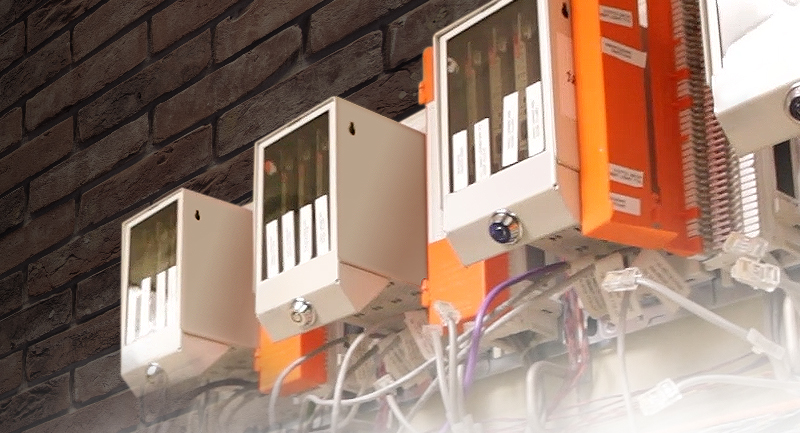
Operational networks commonly provide communications for:
- Protection circuits for assets
- Supervisory control and data acquisition (SCADA) to report on site status
- Telephony between various site locations or substations
- Two-way radio between utility field personnel
- City and multi-county police and fire radio networks
Common challenges include finding a suitable alternative with the Carrier that meets operational needs or weighing options for circuit migration to privatized network transport.
Common leased communication applications
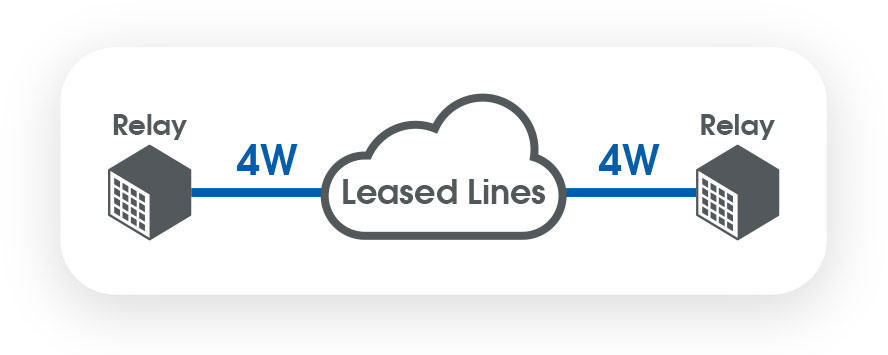
Protection over 4-wire
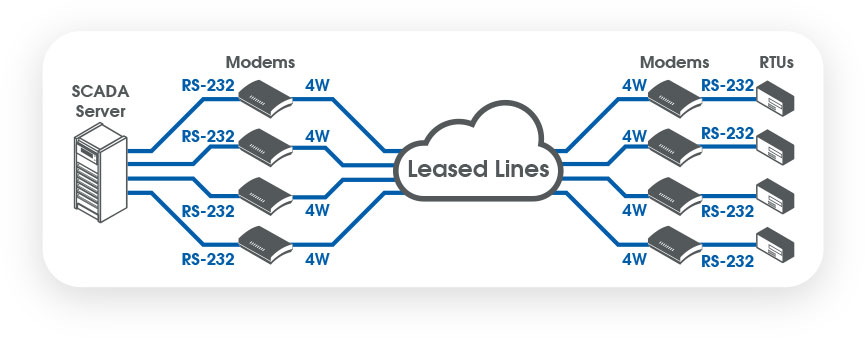
Multi-site SCADA over 4-wire
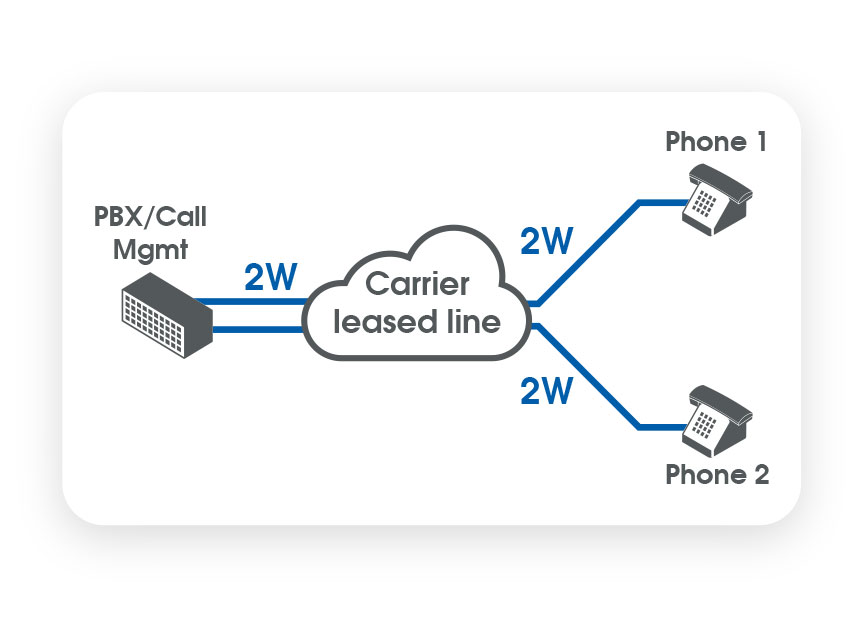
Phone System over Leased Network
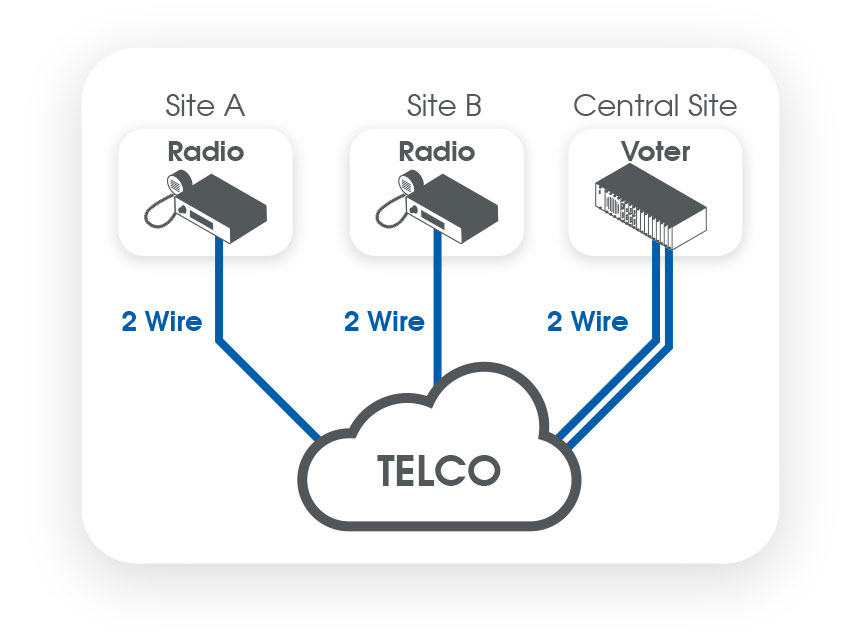
Two-way Radio over 2-wire
It is common for the interfaces of equipment connected to leased lines to fall into one of three categories, each presenting their own specific challenges when working towards retirement:
- Audio. Generally audio connections utilize a 2-wire (2W) or 4-wire (4W) interface, and it is important in interface equipment selection that the equipment is compatible with both interfaces for optimal flexibility. In addition, some equipment requires E&M signaling commonly provided by dry contacts. Some manufacturers integrate E&M and dry contact natively while others do not. Understanding that criteria will be important in hardware selection.
- Serial. Many leased lines are used for serial connectivity primarily by using modems to interface to the leased lines. Some solutions can remove modems for network and maintenance simplification and reduce the risk of hardware failure.
- Alarm or dry contacts. Alarms or dry contacts can be used to display binary status (open/closed, on/off, normal mode/failure mode, etc.) and serve as inputs to alter other device settings. For example, if two of three contacts are closed then a device should change from its primary settings to secondary to account for the situational condition.
Migration options and considerations
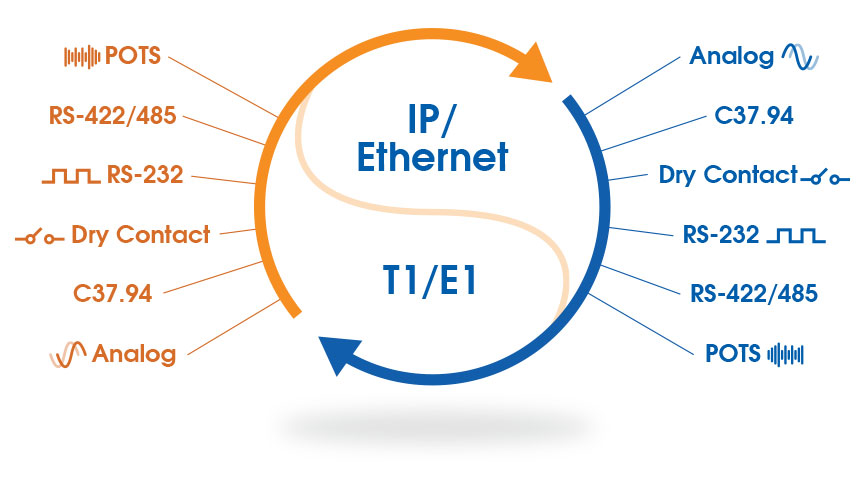
Migration options for retiring circuits include widely deployed transport technologies such as multi-protocol label switching (MPLS), carrier Ethernet, various other IP-based offerings and in some cases T1. In addition, if a utility has a private network, migration from the leased network could be an option. There are many factors to weigh when choosing a migration option, each with its own challenges and benefits.
T1/E1 vs. Ethernet
T1s are a point-to-point technology, so increasing the network's number of circuit destinations could increase the number of purchased T1s (i.e., cost) for a site. However, some network managers prefer T1s for their simplicity, and in some more remote locations, a T1 is the only available backhaul option that meets service level requirements. In addition, the change management to new backhaul technologies can be complicated and require additional resources that may be difficult to come by.
In contrast, Ethernet and IP/MPLS technologies offer flexible deployment options and thus are becoming more prevalent in private network deployments, as well as becoming common carrier offerings. Many utilities and cities have Ethernet networks already deployed for other services.
Private network vs. leased circuit alternative
A collocated private network would be an easy option for migration from leased circuits. However, in many cases the utility is left to compare the cost of extending their private network to switching to an alternative leased circuit type.
Considerations
Two components go into formulating a final decision on which backhaul option is best for circuit migration: total cost of ownership and technology. Below is a short list of considerations for both categories:
Total Cost of Ownership
- What is the short term and long-term cost of implementation options?
- Will either option affect network reliability and outage risk to the customer base (cost of downtime)?
- How do the options align with the short term and long-term network strategy?
- Does the long-term strategy require an interim solution?
- How do these scenarios affect operations, support and reliability of the network?
- What are the cost, maintenance and reliability differences of extending the private network vs. utilizing a carrier technology?
Technology
- What is the long-term plan for end device migration?
- Should retirement be considered part of this analysis?
- Can the alternate carrier circuit integrate with existing devices at all sites? Are there exceptions?
- Are there challenges with replacing or retaining existing devices?
- If considering replacement, do the new device vendors have market longevity?
- Have the proposed new devices been proven to work with the network's existing devices?
- Are there any special requirements that carrier transport technologies cannot meet?
- Does retention of some or all existing devices offer substantial benefit?
Choosing a new network entails weighing many factors but comes down to two primary decisions: alternate carrier circuit vs. private network and Ethernet vs. T1.
Deployment lessons learned
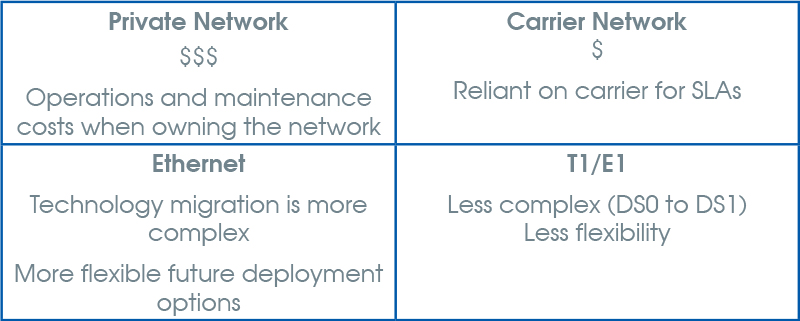
The following deployment examples reflect on lessons learned in migrating leased circuits over the past decade and represent common alternatives of dozens of possible combinations. Each example outlines at least one key challenge and benefit from the transition.

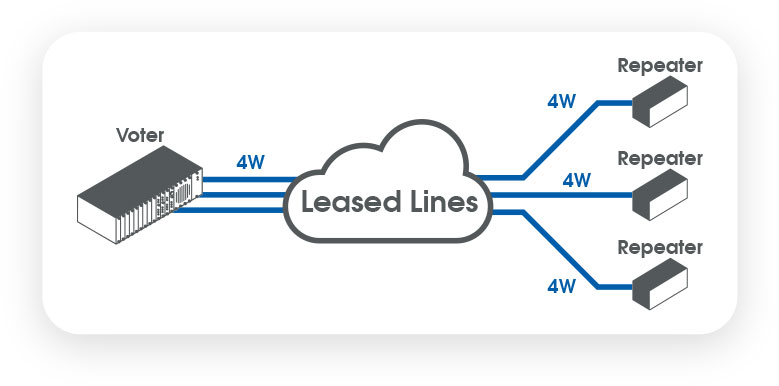
Before
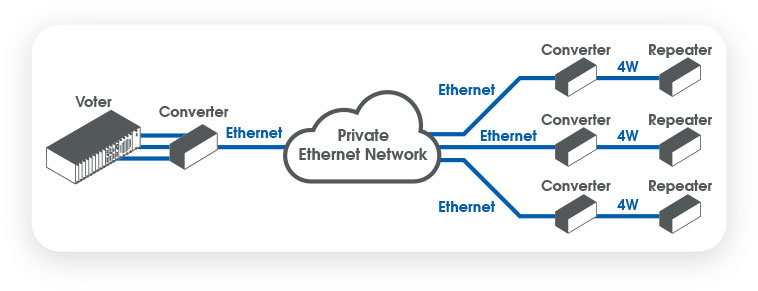
After
Migration for voted Analog Radio network
This utility radio network utilized a 2W/4W voter and repeaters and desired to retain them due to high replacement cost and time needed for additional training on a new radio network. The utility migrated the circuits to their private microwave IP/Ethernet network and utilized a 2W/4W to Ethernet converter. The same conversion is possible utilizing leased carrier Ethernet backhaul if a private network is not feasible at some sites. Migrating to an Ethernet network allowed for the utility to move from point-to-point to a multipoint network, and the converter utilized had multiple circuit transport options which made it easy to migrate other services as well.

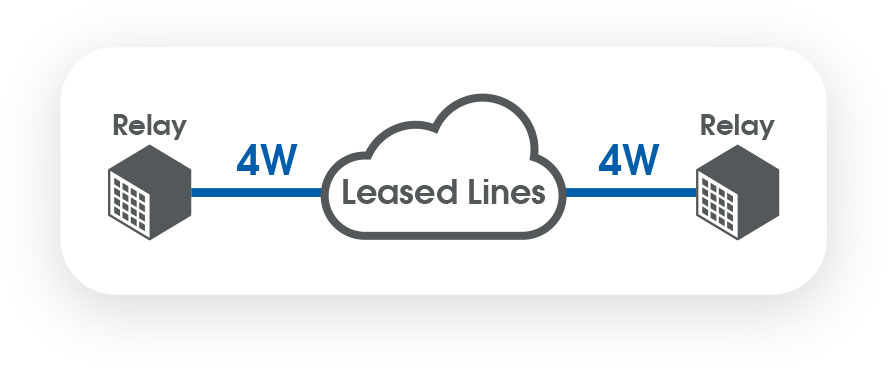
Before
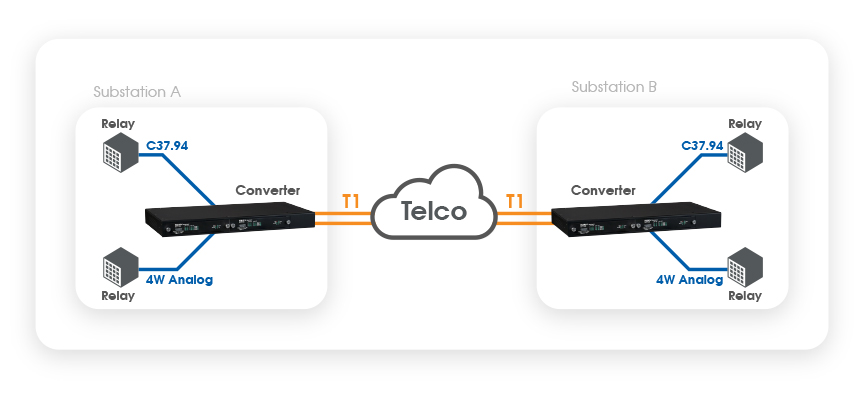
After
Protection over Carrier-provided T1
In this example, a utility had a single protection relay utilizing a 4W leased circuit. The carrier offered T1 as a replacement; however, the T1 did not have the same SLA and uptime as its 4W predecessor. To mitigate the risk of single site or circuit failure, the utility installed a second protection relay utilizing C37.94 over leased T1 and requested diverse transport paths for the two circuits on the carrier network. A converter was added to convert both signal types to T1.
Overall, this required minimal change to the network since both relays were already utilized at other utility sites, resulting in virtually no operations and maintenance impact.

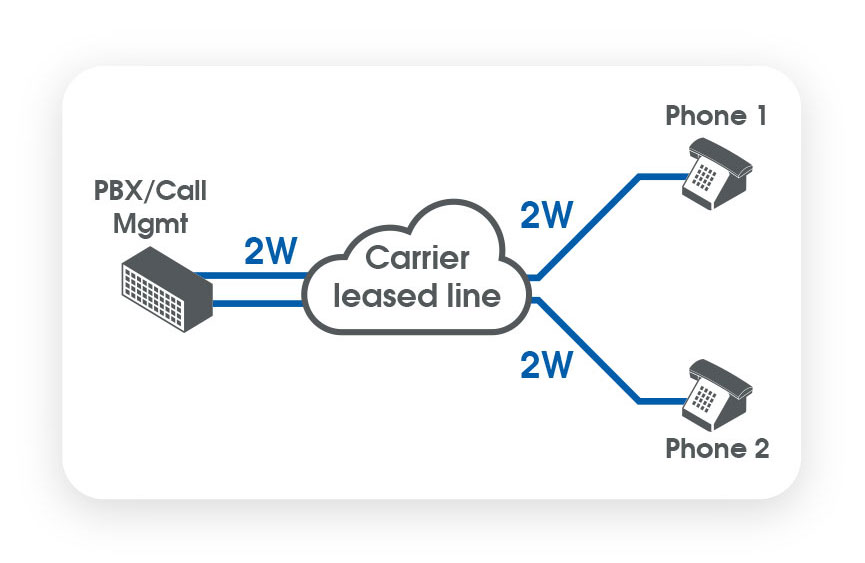
Before
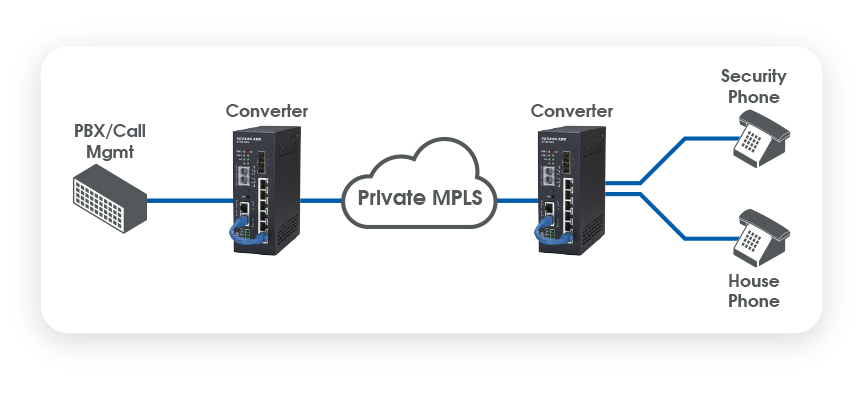
After
Migrating a phone network onto private MPLS
This utility has an analog phone system utilizing leased backhaul including a complex call management/PBX head end. The desire was to migrate the entire system onto a newly built private MPLS network.
Converters were added to each phone circuit and the call management/PBX head end to complete the migration. The converter also had virtual PBX capabilities that would allow removal of the physical PBXs later which created future state opportunities to simplify costs, operations and maintenance of the call system. In addition, retaining the existing system provided near-term cost savings and minimized impact to the utility's business operations.

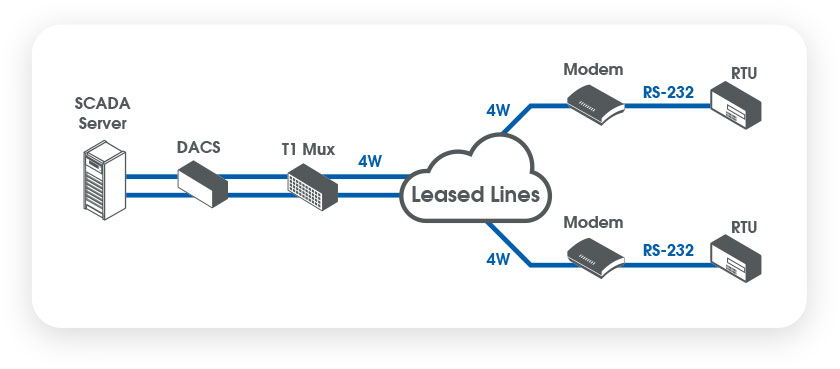
Before
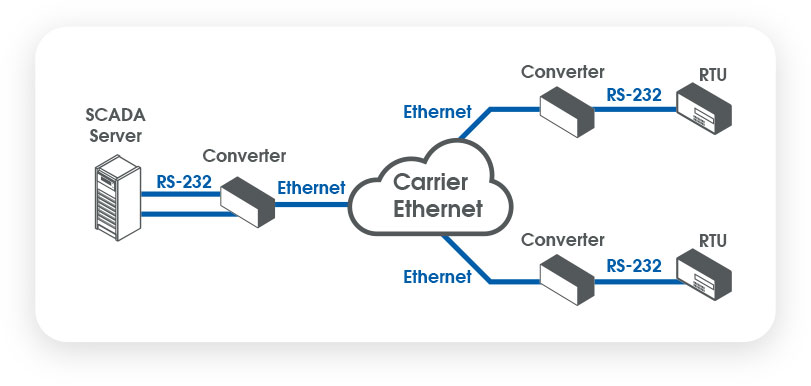
After
Leased Carrier Ethernet for SCADA
In this example, the utility had remote terminal unit (RTU) and digital access cross connect system (DACS) equipment utilizing modems and multiplexers to convert to 4W leased circuits that were being retired.
The utility had a desire to move to a more modern leased backhaul and selected carrier Ethernet. This allowed them to simplify their network by removing multiplexers and modems at various locations which would soon be end of life and replacing them with a direct conversion, reducing the amount of equipment and utilizing a more modern network. This simplified the change management components for training and maintenance on the new equipment and simplified support of the network overall.
Conclusion
While leased lines remain available and widely utilized, Carriers are increasingly decommissioning lines and disincentivizing users by raising pricing significantly.
Noticeable cost savings are achievable with migration to alternative modern network technologies; however, existing terminal equipment is often incompatible. Upgrading both backhaul and terminal devices is costly, disruptive and time consuming, compelling users to consider interface conversion equipment. A well-engineered modern interface conversion solution results in:
- Protection of existing investment in terminal devices
- Facilitation of seamless integration to modern networks
- Negligible disruption to critical operations during migration
- Future-proof investment in modern maintainable network technologies
- Potential for aggregation of services across modern networks
- Real-time network monitoring, diagnostics and control
- Considerable operational cost savings
As well as providing Ethernet over T1, TC Communications provides a wide variety of solutions for connecting legacy devices over T1.
Ask a question
